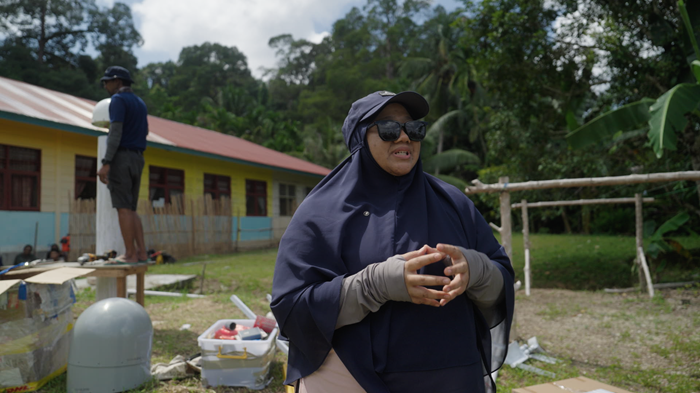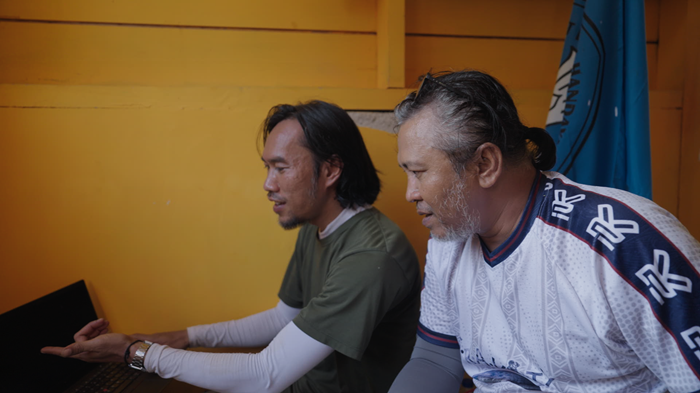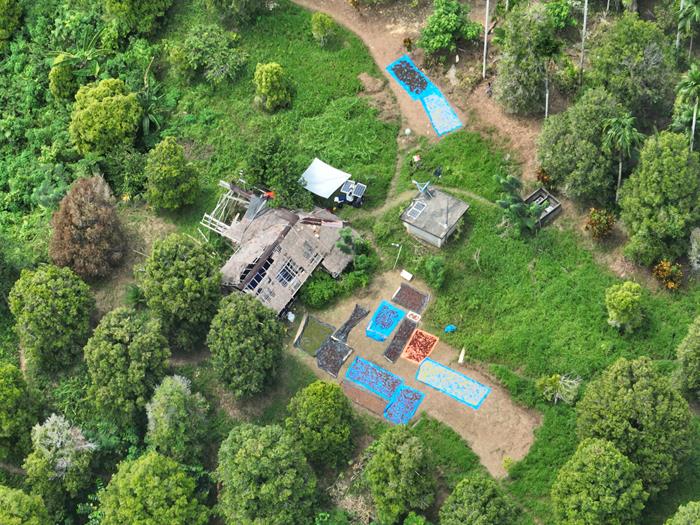This blog post series, titled ‘Fostering collaborative geohazards research in Southeast Asia’, features different types of partnerships in geoscience research, and the factors behind their success. Through this series, we aim to show how collaboration drives research in the region, heightens impact on the ground, and bolsters the resilience of societies.
This first post honours the breadth of collaboration between stakeholders––local researchers, local community members and EOS researchers––that enables the collection of tectonic data to study the Mentawai Seismic Gap.
In September 2024, a team from the Earth Observatory of Singapore (EOS) Centre for Geohazard Observations (CGO) conducted a field mission alongside collaborators from the Indonesian National Research and Innovation Agency (Badan Riset dan Inovasi Nasional, BRIN). Together, they launched the first of eight new stations at Siberut to better investigate the seismic potential of the Mentawai Seismic Gap.
While the team’s mission was to install and maintain existing instruments and stations across the island of Siberut, we joined the trip to document the field activities, support with community engagement efforts on the ground, and capture some research and behind the scenes stories about EOS scientists and their collaborators. With a small film crew, we closely followed the field team for about a week, which allowed us to gain rich insight into the layers of collaboration with local counterparts that enable the geoscience research.
 From left, Dr Iwan Hermawan from EOS, (late) Dr Susilo from BRIN, and Mr Hafidz Ali, local field technician (Source: Earth Observatory of Singapore)
From left, Dr Iwan Hermawan from EOS, (late) Dr Susilo from BRIN, and Mr Hafidz Ali, local field technician (Source: Earth Observatory of Singapore)
Long-standing collaboration between institutions
EOS and BRIN (or formerly LIPI) have been working together for about 15 years on earthquake research in Indonesia. One of their main collaborations is the Sumatran GPS Array (SuGAr), a dense network of GNSS stations that collects data on the Sumatran Fault and the Sumatran Subduction Zone. This subduction zone can generate great earthquakes such as the ones that we have observed since 2004. Scientists need years of data to unravel its functioning and assess the potential for future earthquakes.
Close collaboration between EOS and BRIN is crucial to ensure new stations are installed at the needed locations, and that the full network is maintained. The data collected serve a dual purpose: while BRIN uses these stations for monitoring and research, EOS’ goal is to conduct collaborative research using the data collected.
Mr Leong Choong Yew, the Director of the CGO, explains the high degree of involvement between the teams. “From the beginning of any field trip, both teams would come up with the fieldwork plan together, plan for logistics, and eventually make it down to the sites together,” he said.
From the perspective of BRIN collaborators, the support of institutions outside Indonesia is crucial in supporting their work. “This collaboration is very important, because we usually don’t have enough capacity and expertise to build the network ourselves. So that’s why Indonesia needs to collaborate with [colleagues in] Singapore, for example, to join us in observing the tectonic activity around Sumatra,” said Dr Deasy Arisa, a Senior Researcher at the Centre for Geological Disaster at BRIN who was also part of the team installing the new station at Siberut.

Dr Deasy Arisa from BRIN in front of the new GNSS station that was installed at Tiop Village (Source: Earth Observatory of Singapore)
Trust between colleagues
Sometimes, these longstanding collaborations between institutions also give rise to the opportunity for personal relationships to develop between the individual team members.
For example, Dr Iwan Hermawan, Research Fellow at EOS, and his BRIN counterpart, the late Dr Susilo, Senior Researcher at the Research Centre for Geological Disaster, met all the way back during their university days. During the Siberut field trip, they shared with us that Dr Hermawan was Dr Susilo’s junior in university and even then, they would work on projects together. Later, they reunited in a professional capacity when their career pathways converged.
Since 2022, they have gone to the field to install and maintain SuGAr stations at least once a year, and they have contributed to several peer-reviewed publications that use these data. The cumulative years working alongside each other provided a strong basis for a productive, smooth-sailing partnership in the field.

Dr Iwan Hermawan from EOS and the late Dr Susilo from BRIN, who had a longstanding personal and professional relationship. In this photo, they were working together to get the receiver box of the GNSS station operational (Source: Earth Observatory of Singapore)
Beyond the pair, the rest of the team had worked together extensively for years, and this showed in the way they operated in the field. We witnessed how some workdays stretched into long hours of working under the hot sun, treks up challenging terrains, or even cramped within stuffy bunkers. Despite all these strenuous conditions, the team maintained calm and collected, meeting unexpected circumstances with mutual trust in each other and adjusting accordingly.
The relationships fostered within the field team illustrates the benefits of long-term collaboration, which enables the building of personal relationships of trust between individuals across institutions.
Building up consistent engagement with Mentawai locals
The support of the local villagers is also crucial for the stations to remain operational, and not damaged by animals or human vandalism, for example.
During the trip to Siberut, the team maintained a station called NGNG, which is located next to a shed maintained by a clove farmer. Years ago, the team specifically chose this site for the station because the clove farmer’s family regularly maintains the grounds. This means that they could help looking over the scientific instruments, and with doing simple maintenance of the compound.

An aerial drone photograph taken above the clove farmer’s compound , which also houses several scientific instruments and sensors (Source: Earth Observatory of Singapore.)
This collaborative relationship with local communities is expected to intensify further, as the new line of GNSS stations that are being installed by EOS and BRIN on Siberut are housed closer to human centres. For example, the first station that was installed at Tiop Village is located next to a local school, which required the buy-in and support of the local community to house the station there. Simultaneously, the stations being positioned nearer to community centres provides an educational opportunity for local students and villagers to learn more about the natural hazards that might impact their community.
Other opportunities for engagement with the local community includes working directly with locals to support the fieldwork. One such example is the boat operator, Andreas Seppungan. A local to Maileppet, Siberut, Andreas has been a part of the SuGAr field team since 2013. Other than being the regular boat operator they employ in the field, Andreas also picked up the technical skills over the years to support the installation and maintenance of various field instruments.
Through examining the case study of SuGAr, we were able to explore the multi-layered partnerships and interpersonal ties at the individual level that enable the overall success of field missions, which are critical to collect the data needed to assess the seismic hazards in the region.
This research contributes to the programme 'Integrating Volcano and Earthquake Science and Technology' and is supported by the Ministry of Education, Singapore, under its MOE AcRF Tier 3 Award MOET32021-0002.
_________________________________________________________________________________________________________________________________________
We are saddened by the loss of Dr Susilo, a close collaborator and cherished friend to many EOS staff, who passed away between the fieldwork in 2024 and the writing of this article. His invaluable contributions and commitment to geoscience research will be remembered by the geoscience community and all who had the privilege of working with him. His legacy will inspire and guide us, as we continue on with the work.